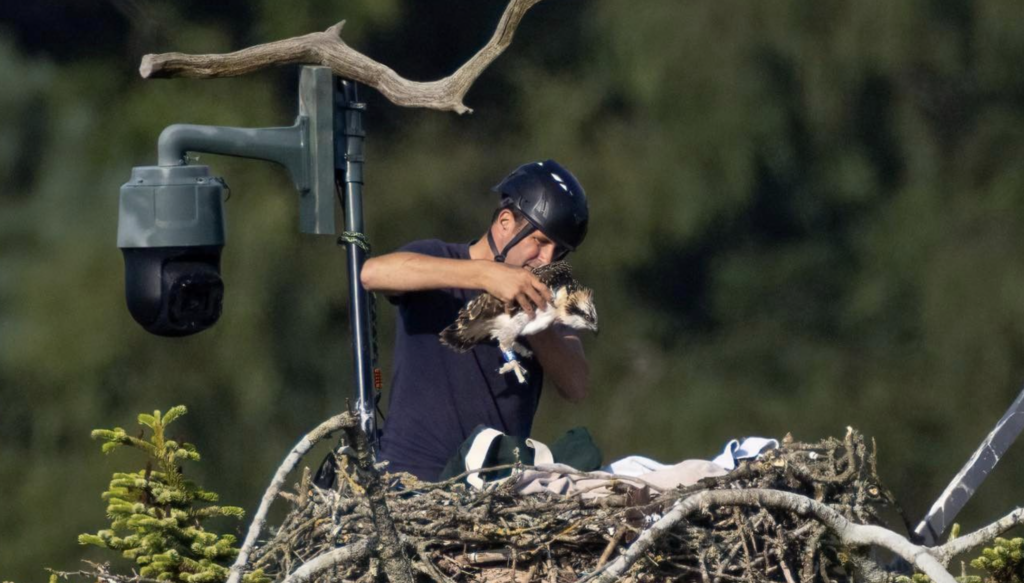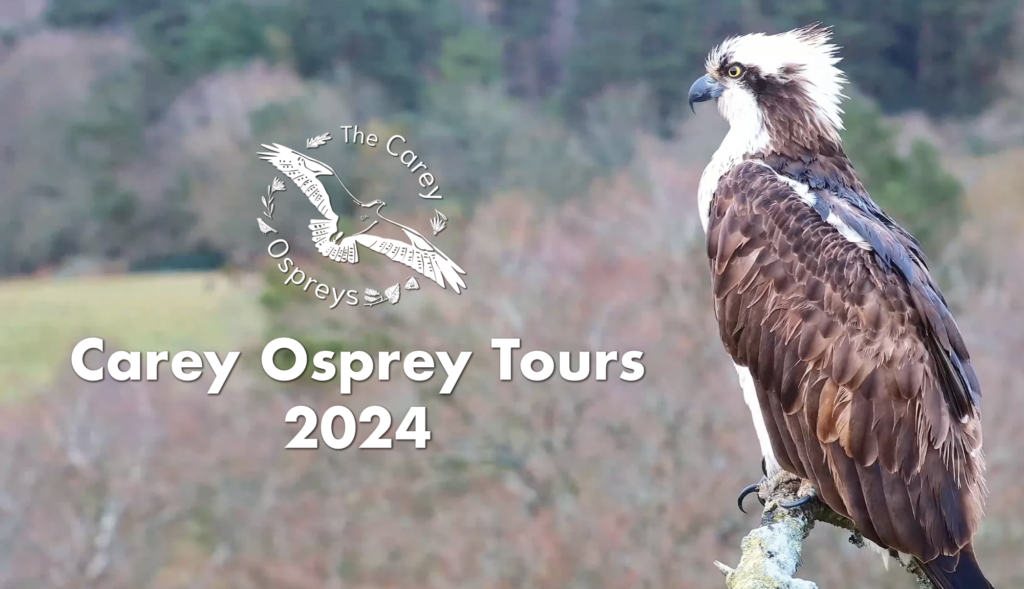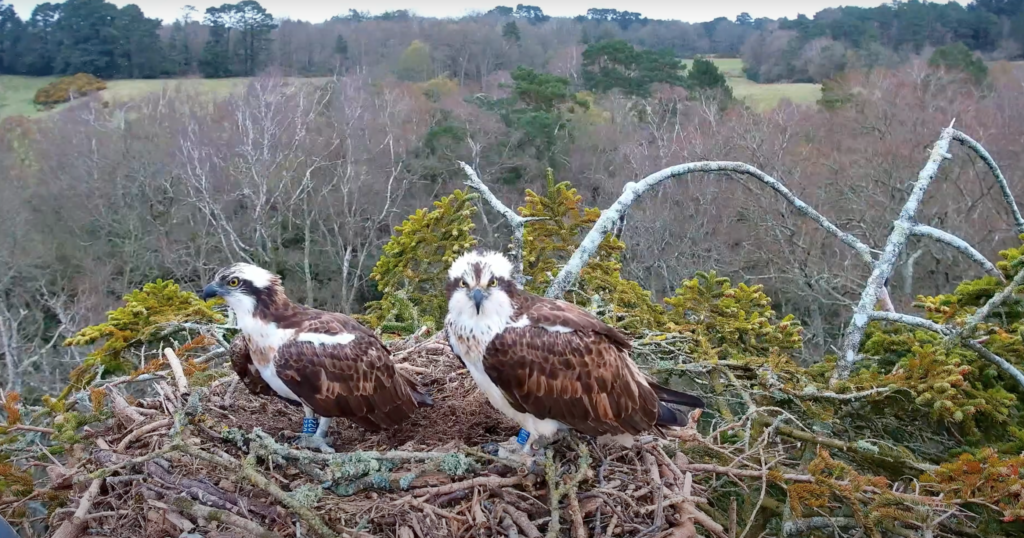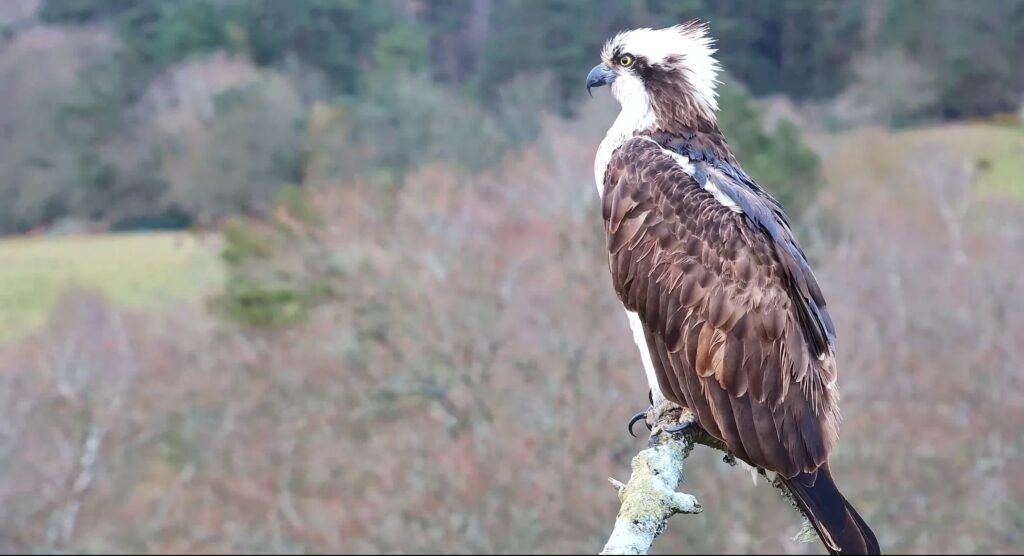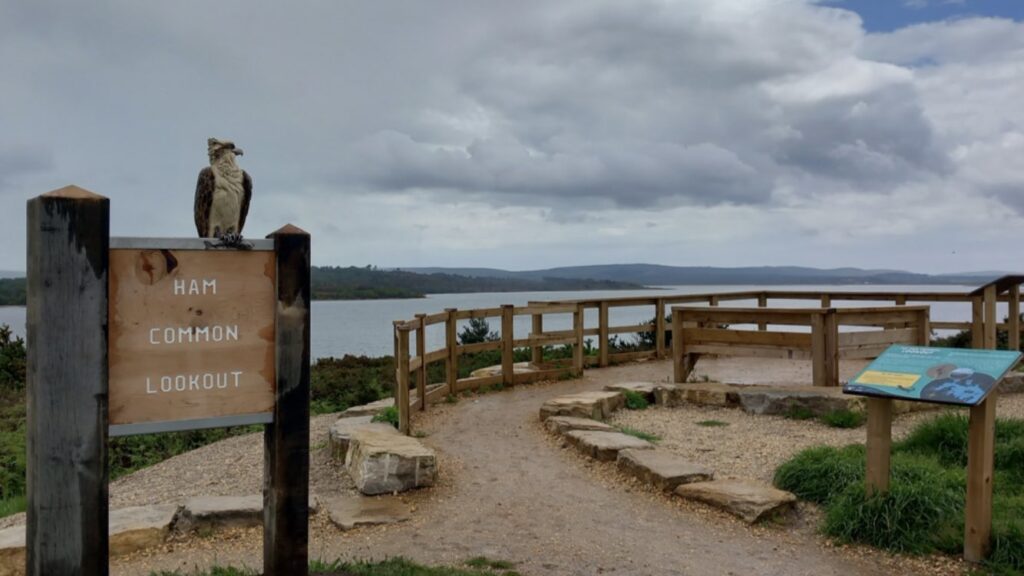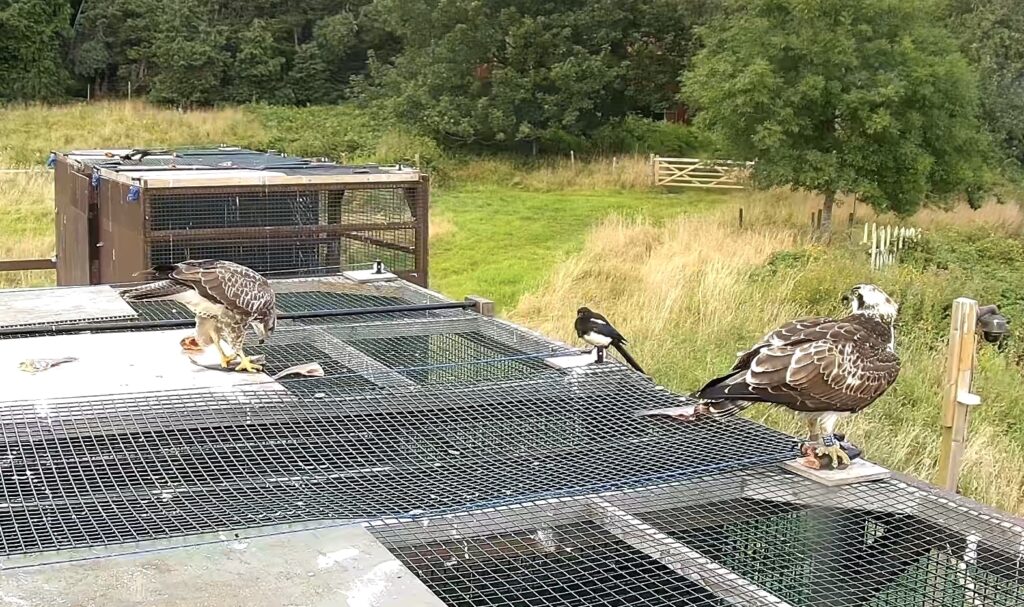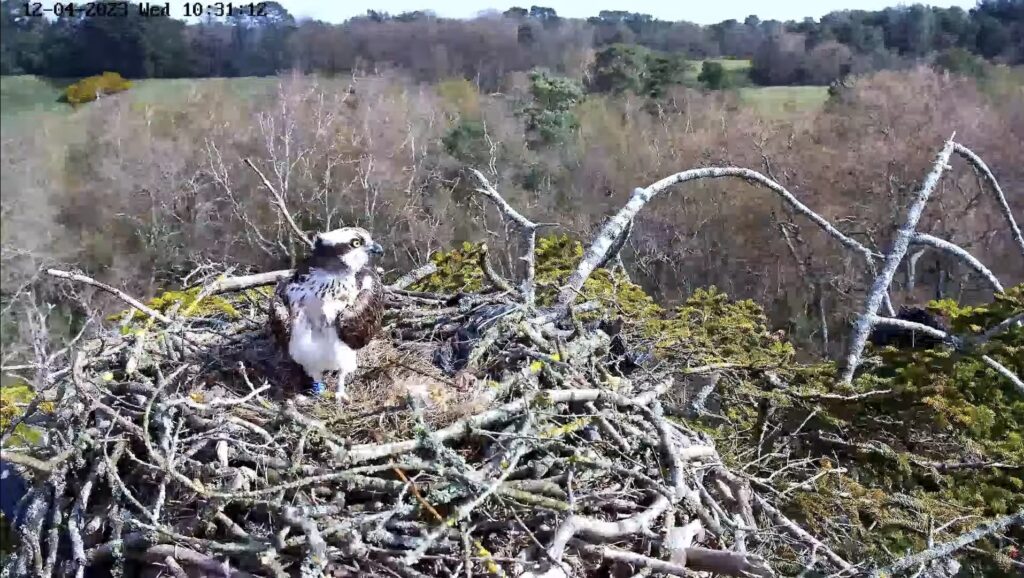Since 2017, Birds of Poole Harbour and the Roy Dennis Wildlife Foundation have been working hard to re-establish a South Coast breeding population of Osprey; a majestic bird that really captures people’s imagination. Since the story began, an ever-growing community of people from near and far have followed the project and offered their support, sharing our excitement through its twists and turns. For many people this connection began in 2020, when we launched the livestream nest camera and CJ7 found her way into people’s hearts, providing a much needed distraction for thousands of us during the early months of the pandemic. Our hopes grew the following year, with the return of our translocated male 022 and the strong pair-bond we watched him form with CJ7. 2022 then delivered the outcome we had been waiting for, when the pair made history by raising two chicks and became the first breeding Ospreys in Southern England in nearly 200 years. Having both safely returned this spring, we’re now in the exciting position to be able to share the next part of this story with you, by hosting a series of guided viewing experiences at the site where the pair have taken up residence.
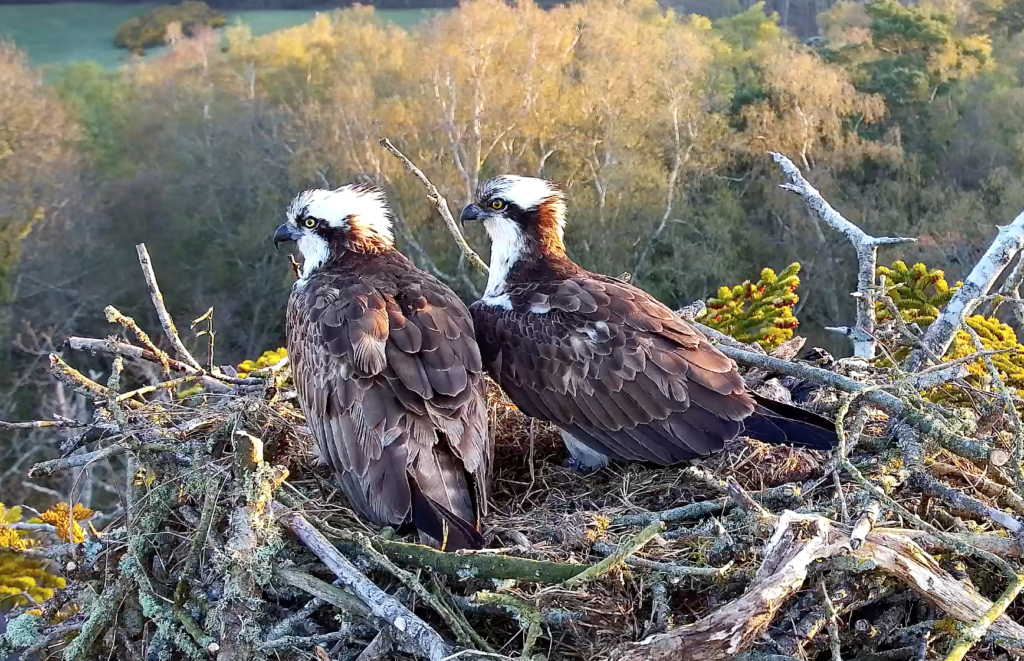
Seeing the special attachment that people have formed to the pair and their story has been one of the most rewarding elements of the whole project, alongside witnessing just how well this incredible bird of prey can re-establish in this part of the country: soaring over Poole Harbour and hunting on the edges of the conurbation. Like so many of our lost species, they belong in this landscape and that they are wanted here, as is evident by the number of people who now visit the area specifically to see and learn about the Ospreys. This eagerness to see the birds, though, must also be carefully balanced against their sensitivity to human disturbance, particularly around their nest site.
Over the last year, more and more people have inevitably discovered where the pair are nesting, and we have been incredibly grateful for their cooperation in keeping the location to themselves. Most importantly, this has given the pair space to settle and have a successful first season, but it has also allowed us to build a plan to provide a secure guided viewing opportunity at the site with the bird’s best interest in mind. To be able to achieve this, we have been lucky enough to form a partnership between Birds of Poole Harbour and local business Careys Secret Garden; a beautiful walled garden nestled in the Piddle Valley that is perfectly situated to provide guided viewing of the Osprey nest.
Careys Secret Garden is an award-winning business that puts the local community and wildlife at the heart of what they do, offering garden visits and hosting a brilliant array of events throughout the year.
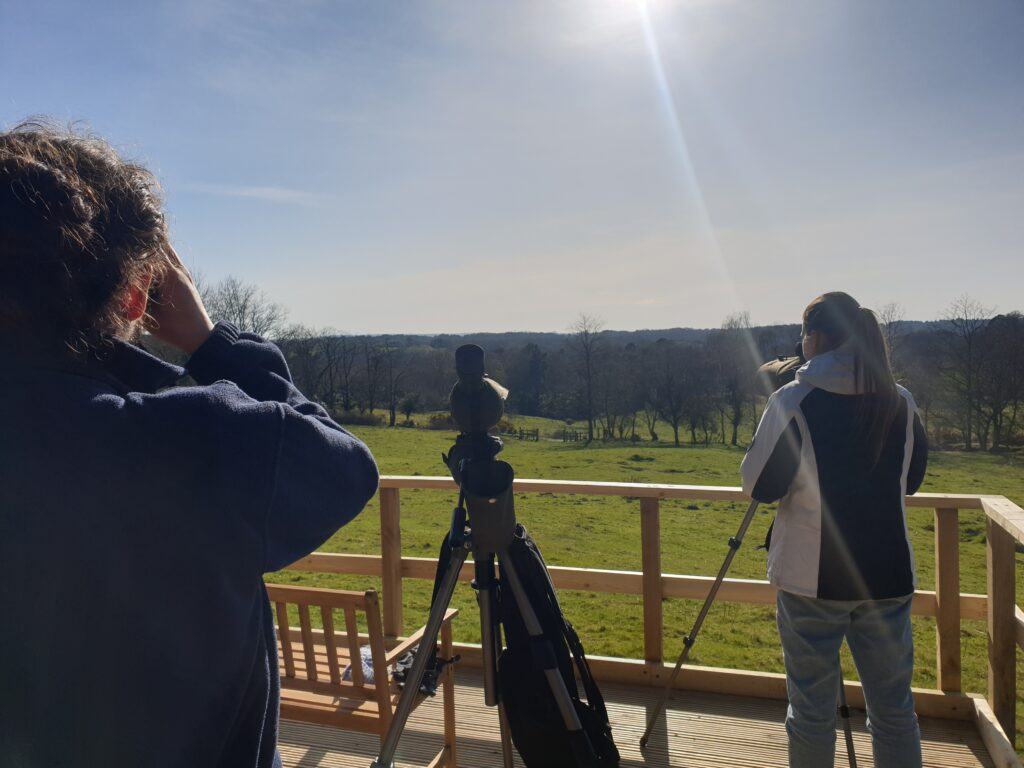
They have helped us keep the nearby Osprey pair a secret over the last year, with just a few observant garden visitors noticing the aerial Osprey activity over the garden. We are now excited to be partnering with them to add Carey Osprey Tours to the events offered by the gardens, with three sessions each day on Thursdays, Fridays and Saturdays. These two-hour tours will be led by an expert from the Birds of Poole Harbour team and will be bookable online in advance, with initially only 6 tickets available per session. The tickets include an in-depth guided tour up to a new Osprey nest viewing platform, with the opportunity to learn more about the Poole Harbour Osprey Project from your guide, as well as access to the stunning walled garden and its facilities for the duration of the day.
The public’s enthusiasm and care has been integral to the successful conservation of Ospreys in this country right from the very beginning, ever since public viewing was first permitted at RSPB Loch Garten back in the 1950s. This engagement work – which has since been replicated at sites across the UK and abroad – not only compliments ongoing efforts to safeguard Osprey nests, but even enhances them, by educating a wide audience and ensuring that many watchful eyes work together to protect the Ospreys from harm. We hope this story will continue in Dorset and by sharing the location of the nest we are putting our faith in the public to act as custodians of the species once again. Careys Secret Garden shares our appreciation for just how special it is to be able to provide viewing access to the only Osprey nest on the South Coast, and the responsibility that comes with that. The viewing of the nest at Carey is therefore being very carefully managed to avoid any risk of disturbance, with only small groups permitted at any one time, so please make sure to book onto one of the tours in advance if you would like to visit and share this experience with us.
From the moment the pair returned this season, our staff and volunteers have worked hard to monitor their behaviour, whilst also assessing their reactions and acclimating them to the presence of small groups of onlookers watching from a platform at a safe distance from the nest. Despite Ospreys being real creatures of habit, we have been very encouraged by how well CJ7 and 022 have adapted to this small shift in their surroundings. Of course, the success of the pair is our priority, and so if there are any signs of detrimental impact as a result of our tours, we’re sure you will understand our need to pause these events and review our activities on site.
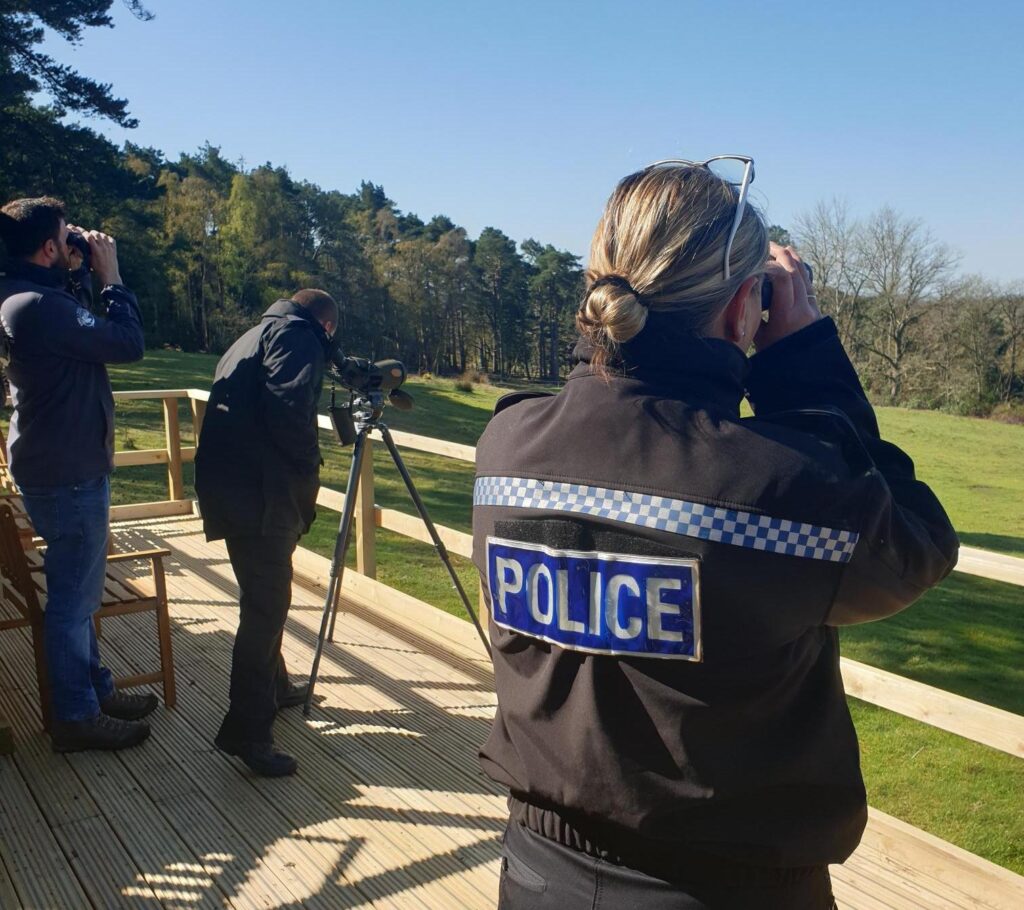
Osprey are a Schedule 1 species, meaning they have the highest level of protection under the Wildlife and Countryside Act. This means it is an offence to intentionally or recklessly disturb the species near to, at, or on an active nest, providing a legal base for any disturbance issues the pair may face. Like last year, the nest will still be protected each day, with our dedicated team monitoring the nest and surrounding area, and additional protection provided by security units at key locations. We’re also working closely with Dorset Police Rural Crime Team and the National Wildlife Crime Unit to ensure there is no disturbance or trespassing risks to this private site.
These first stages of recovery of Osprey on the South Coast are symbolic of a great deal of hard work and inspiring conservation efforts being made to restore nature locally. It’s very exciting to be able to share this next phase of the story with you, and, with three eggs currently being incubated, it hopefully won’t be long until we have more wild Osprey chicks fledging in Dorset. Here’s hoping for another successful season for CJ7 and 022!


